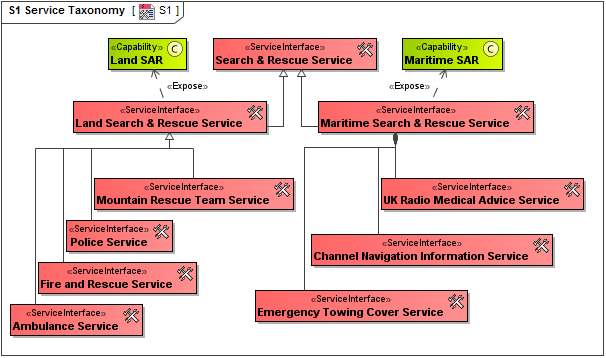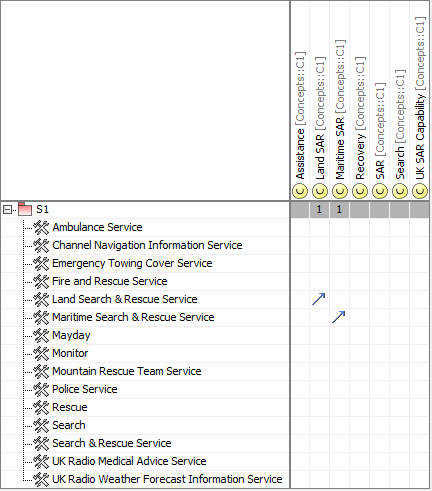Description
The S1 Service Taxonomy view specifies a hierarchy of services. The elements in the hierarchy are service specifications (rather than service implementations), and the relationships between the elements are specializations – i.e. one service is a special type of another. The purpose of an S1 is to provide a governance structure for a Service-Oriented Architecture. Along with S3-Service Interfaces, it specifies a standard library of service specifications for an enterprise, which service implementers are expected to conform to.
A service is an implementation-independent specification of a packaged element of functionality and/or capability. There is potential for confusion between services and capabilities. The key indicator of a service is that it provides a standard interface to consumers. This means that services may be used as “wrappers” for one or more capability in order to provide a standard method of access to the capability. A well-designed service taxonomy provides a set of specifications for capability providers to adhere to. Services may have attributes and constraints (service policy) defined against them. Attributes are inherited by specialized services. Where an attribute is specified for a service, implementations of that service shall specify their values for the attribute.
The S1 view may be used to:
- SOA governance.
- Identification of services.
- Service planning.
- Service audit.
- Service gap analysis.
- Providing reference services for architectures.
- Tailoring generic services for specific applications.
Implementation
The S1 view can be represented using:
- A S1 Service Taxonomy diagram which is based on the UML Class diagram.
 S1 Service Taxonomy diagram
S1 Service Taxonomy diagram - A C1-S1 Capability to Services Mapping matrix.
 S1 Capability to Services Mapping matrix
S1 Capability to Services Mapping matrix
- Service Interface
- Capability
- Expose